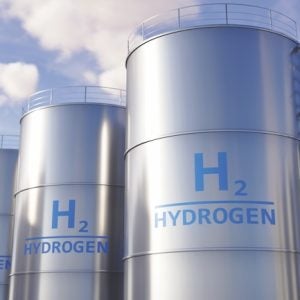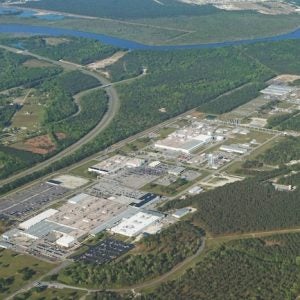Electricity from a new generation of nuclear reactors is likely to cost twice as much as other low carbon options such as renewables combined with energy efficiency measures, according to a new study by economist Mark Cooper, a senior fellow for economic analysis at the Institute for Energy and the Environment at Vermont Law School.
In the study, The Economics of Nuclear Power: Renaissance or Relapse? over 30 different cost projections have been analysed. Cooper says utilities have been “low-balling” costs in an effort to secure regulatory approval and that analyst projections putting the cost of new reactors at more than $5000/kW are more realistic.
When he compares these figures with cost estimates for alternative means of power generation, he concludes that nuclear reactors are not economically competitive. Even with huge subsidies, Cooper says nuclear energy would remain more costly than the alternatives, such as efficiency, biomass, wind and cogeneration.
The report, released in June, shows that the projected price tags for nuclear plants have quadrupled since the start of the ‘nuclear renaissance’ at the beginning of this decade. It parallels this with the ‘great bandwagon market’ of the 1960s and 1970s, which saw a seven-fold increase in costs, alluding that history is likely to repeat itself.
The report is broken down into four sections. First it looks at a number of recent cost estimates, compares and analyses them. Second, it places these recent projections in the context of the history of the nuclear industry and compares them with the costs of building 100 reactors from 1971-1996. The cost of nuclear compared with other alternatives is examined in the third section. Finally the study looks at a range of qualitative factors including environmental concerns, risks and subsidies that affect decisions about which technologies to utilise in a carbon-constrained world.
Estimating how much nuclear will cost is extremely complex, so cost estimates vary widely from a low of 8.4 cents/kWh to a high of 30 cents/kWh in the last year (see table).
There are a number of different types of cost estimates; overnight costs, all-in costs, and busbar costs are the most common in literature.
Overnight costs (sometimes called instant costs) are a hypothetical estimate of what it would cost if all the parts of the facility could be assembled and put together instantaneously. The concept isolates the raw material, manufacturing of components, and labour costs. But, Cooper says, facilities are not built over night; in the real world they take years to build. Construction must be financed. Adding in finance and owner costs yields all-in costs (sometimes called installed costs).
There are other costs, in addition to the cost of installing the facility, which must be incurred to generate electricity. Fuel, operation and maintenance, and additional capital costs must be recovered, while provisions must also be made to dispose of waste and to ultimately decommission the facility. Combining these with the installed costs yields the busbar cost – the cost of delivering electricity to the point of interconnection with the grid. This cost of generation is the real world cost that is presented to the public utility commission for collection from ratepayers.
According to Cooper, the most important element affecting the cost of nuclear reactors is the overnight cost and how it is treated financially. Capital costs account for about three-quarters of the cost of nuclear-generated electricity. Financial parameters have a large impact on nuclear costs because the reactors are capital-intensive and take a relatively long time to construct. Return on investment and cost recovery are major variables affecting the cost of a reactor.
Plant characteristics play an important part in the analysis, with key parameters being plant life, capacity, and performance. Capacity factors of 90% that are observed today took two decades to achieve. It may be a mistake to assume that new reactors will achieve those high capacity factors from day one and this could lead to higher costs, the study notes.
In the MIT study, with the base case assumption of a 40-year life for the reactor, decreasing the capacity factor from the base case assumption of 85% to 75% increases the busbar cost from 7.7 cents per kilowatt hour (kWh) to 8.6 cents/kWh (2008 $), Cooper notes.
Operation and maintenance costs are the next most important, followed by fuel costs. The ultimate impact of waste disposal and decommissioning costs has yet to be determined, in part because they have not yet been fully realized with permanent storage facilities and fully decommissioned large reactors.
Déjà vu
Cooper says we need to look at the history of reactor costs in the USA to understand what is going on today.
In about a decade from the late-1960s to the late-1970s, 240 reactors were ordered. But the ‘great bandwagon market’ for nuclear reactors, as it came to be known, soon halted. Construction delays and cost overruns, as well as regulatory changes, drove the cost of reactors up dramatically (see graph). More than half of all the orders for reactors were cancelled, with many of the projects having already incurred significant costs.
The rapid escalation of cost projections for new reactors in recent years raises major concerns, especially in light of the history of cost escalation in the nuclear industry, Cooper says.
In the 1960s and 1970s, one of the major causes of the cost increases and missed projections was the inability of the industry to deliver reactors on time. Large capital costs sitting on the books generated capital charges and a rate shock when the utilities finally finished the reactor. These charges accumulate, creating more and more expensive power. By the end of the construction cycle which started in the 1960s, the projected construction time had increased by 50% over 6 years – but actual construction periods were almost 10 years, according to Cooper’s analysis. The correlation between construction periods and overnight costs is strong for both completed reactors and projections for future reactor costs.
According to Cooper, new reactors could easily be afflicted with the same problems. Inherent characteristics of large complex nuclear reactors make them prone to delays and cost overruns. Reactor design is complex, site-specific, and non-standardised. In extremely large projects that are dependent on sequential and complementary activities, delays tend to turn into interruptions. In the supply chain, material costs have been rising and skilled labour is in short supply. In some cases, there is only one potential supplier for critical parts. Any increase in demand sends prices skyrocketing.
Cooper cites the difficulties of Finland’s Olkiluoto nuclear reactor being built by Areva as a reminder of how these problems unfold. The project has fallen three years behind schedule and more than 50% over budget. This delay has caused the sponsors of the project, TVO, to face the problem of purchasing expensive replacement power; the costs of which they are trying to recover from the reactor builder. The cost overruns and the cost of replacement power could more than double the cost of the reactor.
Not competitive
According to Cooper’s analysis, the estimated cost of nuclear electricity production is 12-20 cents /kWh, compared with an average of 6 cents/kWh for a combination of energy efficiency improvements plus some renewables.
Cooper’s 6 cent/kWh combo comprises 44% energy efficiency measures and the rest from renewables that have a lower cost than nuclear reactors. The average cost of efficiency is 4 cents/kWh. He categorises the nine renewable technology options with costs lower than nuclear as biomass I, efficiency, cogeneration, geothermal, hydro, wind I, biomass II, wind II, solar thermal. Their weighted average is just over 5 cents/kWh.
On this basis, a 1000MW nuclear reactor at 12 cents/kWh and a 90% load factor would cost over $470 million more per year than the alternatives at 6 cents/kWh. Assuming a 40-year lifetime, one hundred plants would have an excess cost of between $1.9 trillion and $4.4 trillion for the 20 cent/KWh scenario, Cooper concludes.
Cooper says that governments should pursue the least cost low-carbon options first. Initiatives such as efficiency, cogeneration, biomass, geothermal, wind, solar thermal etc. can meet electricity and carbon reduction demands for 30 years, he adds, so nuclear power will not be needed until at least then, by which time technologies such as IGCC may be more competitive.
Subsidies: not a solution
The report notes: “ if nuclear reactors cannot stand on their own in the marketplace, they should not be propped up by subsidies,” a view echoed by a number of governments in Europe, the UK being a prime example.
But, according to Cooper’s report, even with huge subsidies nuclear cannot compete with most renewable technologies in the USA – especially since Congress says it is “technology neutral,” allowing subsidies for all low carbon technologies.
A technology-neutral subsidy does not change the consumer economics much. Such a subsidy still leaves nuclear between 7 and 9 cents/kWh more costly than a mix of efficiency and renewables, notes the report.
In some states companies considering building nuclear reactor have asked to be granted Construction Work in Progress (CWIP), which allows the utility to start being paid for the plant or reactor before it is completed and producing power.
By charging consumers for capital expenditures before assets are used, utilities can claim to lower total costs because capital charges do not build up during construction.
Cooper argues that the consumer benefits come at a cost. He points to the recent CWIP dispute in Georgia around the Vogtle plant to shine a light on the issue.
“According to the utility’s own numbers, consumers pay $2 billion more in rates during the seven-year construction of the plant and the utility earns $1 billion sooner. Over the next sixty years consumers pay slightly lower rates, eventually coming out $300 million ahead.”
Utilities earn a lot more a lot sooner than consumers do because of the pattern of cost recovery. Even if consumers place no time value on their money, they do not break even for 17 years, Cooper concludes.
Related ArticlesGuarantees are key Nuclear decline set to continue, says report Olkiluoto 3 reactor building gets roof Swiss decommissioning cost estimate rises by 10%
| NEI replies: nuclear wins out in the long run |
|
The Nuclear Energy Institute has responded to Cooper’s study, saying it “presents a biased view of the costs for new nuclear energy facilities.” – The cost of building advanced reactors is about the same as advanced coal plants with carbon storage, but nuclear energy has the lowest fuel cost over decades of electricity production. The cost of power from coal and gas-fuelled power plants would rise in a carbon-constrained world, further increasing their electricity costs. |
FilesThe Brattle Report, cited by the Nuclear Energy Institute NEI white paper on the economics of nuclear power The Economics of Nuclear Power – full report Overnight cost of completed nuclear reactors Busbar costs of alternatives to nuclear power






